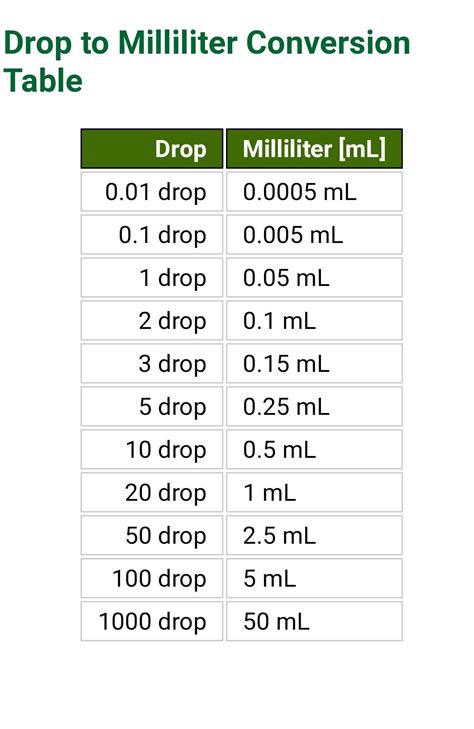One Drop Is Equal To How Many Ml? A Comprehensive Guide
Knowing the exact conversion of drops to milliliters is crucial in various fields, from cooking and medicine to scientific experiments. While it seems straightforward, the reality is that a "drop" isn't a standardized unit of measurement. The volume of a single drop varies significantly depending on several factors. This guide will delve into the complexities of drop-to-milliliter conversion, providing you with the information you need to make accurate estimations.
Factors Affecting Drop Size
Before we dive into estimations, it's important to understand what influences the size of a single drop:
- The liquid's viscosity: Thicker liquids (like honey) produce larger drops than less viscous liquids (like water).
- The dropper's tip size: The diameter of the opening of the dropper significantly affects drop size. A larger opening will release larger drops.
- Surface tension: The liquid's surface tension plays a role in determining the size and shape of the drop.
- Temperature: Temperature can slightly affect a liquid's viscosity and surface tension, thus impacting drop size.
The Commonly Used Approximation
While there's no universally accepted conversion factor, a frequently used approximation is:
1 drop ≈ 0.05 mL
This means that approximately 20 drops equal 1 milliliter (mL). However, it's crucial to remember that this is an approximation and should only be used when high accuracy isn't essential.
When Precision Matters: Alternative Methods
For situations requiring precise measurements, relying on the "20 drops per mL" approximation is inadequate. Instead, consider these methods:
1. Using a calibrated dropper or pipette:
Many droppers and pipettes are calibrated to dispense a specific volume per drop. Always check the manufacturer's specifications. These calibrated tools provide much more accurate measurements than estimations.
2. Weighing the liquid:
If you know the density of the liquid, you can determine the volume by weighing a specific number of drops. This method requires a sensitive scale and knowledge of the liquid's density. The formula would be: Volume (mL) = Mass (g) / Density (g/mL)
3. Using a graduated cylinder or syringe:
For more accurate measurements, particularly with larger volumes, use a graduated cylinder or syringe. These tools provide precise volume readings.
The Importance of Accuracy: Context Matters
The acceptable level of error in your conversion depends heavily on the context:
- Cooking: A slight variation in the number of drops usually won't drastically affect the outcome of a recipe. The approximation is often sufficient.
- Medicine: In medicinal applications, accuracy is paramount. Never rely on estimations; use calibrated instruments. Incorrect dosages can have serious consequences.
- Scientific experiments: Precise measurements are essential in scientific work. Calibrated instruments are crucial to ensure the reliability and reproducibility of experiments.
In Conclusion:
While the "one drop equals approximately 0.05 mL" rule is a handy guide for casual use, precision requires calibrated tools. Always consider the context and choose the appropriate method for converting drops to milliliters. Accuracy is paramount in many situations, so always prioritize precision when the stakes are high.
